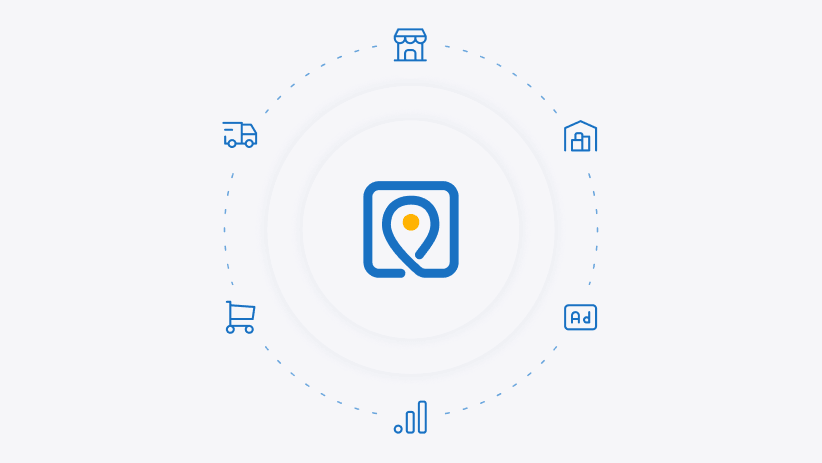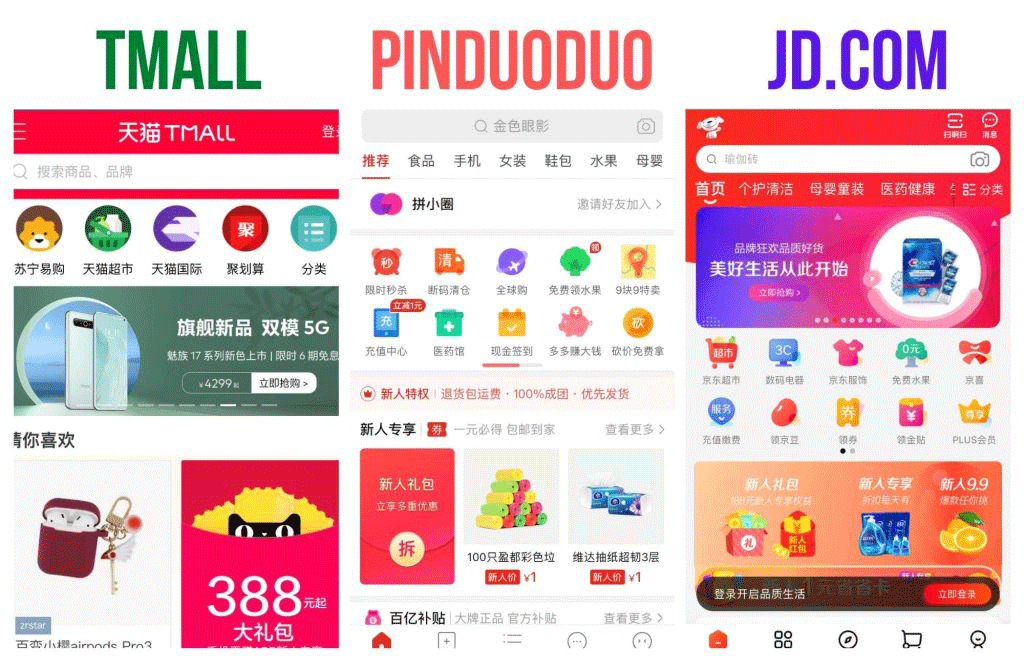Free Suggestions For Choosing Sellvia Wordpress Dropshipping Services
Free Suggestions For Choosing Sellvia Wordpress Dropshipping Services
Blog Article
What Are The Features Of Customer Service And Support Features Of An Amazon Seller? Shopify Or Wordpress Dropshipping Services In Us Markets?
It is crucial to evaluate the customer service and support features in dropshipping items to the U.S. on Amazon Seller Shopify or WordPress (WooCommerce), is crucial, since customer satisfaction relies heavily on efficient and quick communication and reliable issue resolution. Here's a guide to evaluating each platform's customer support tools and features.
1. Amazon Seller
Amazon Customer Service Policies
Amazon has strict rules regarding customer communication. You must follow Amazon's guidelines for how and when you communicate with customers. It is expected that you respond to customer queries within 24 hours. This can be a bit demanding.
FBA sellers will save time by using Amazon's FBA Program, which handles refunds, returns and customer queries. Merchant Fulfilled Network (MFN) requires you to handle returns, questions and refunds in a direct manner.
Support for Sellers
Seller Support Services Amazon offers seller support via its Seller Central platform. You can access FAQs, resources and email or live chat support to help resolve problems like account management, ordering issues and policy questions.
Amazon holds sellers accountable according to metrics like Order Defect rate (ODR) as well as response times. Problems with customer service can result in account suspensions.
Amazon Sellers: How to Evaluate their Performance
Evaluate Responsiveness Requirements: Review Amazon's requirements for customer response times and make sure that you have the capacity or the tools (such as automated response systems) to meet them.
Return Handling - If use MFN, find out whether the fulfillment partner can assist with returns. If you use FBA, Amazon will handle returns, however it is essential to be aware of any issues to ensure that customers are satisfied.
Customer Service Tool: Make sure that you are familiarized with Seller Central’s tools for handling refunds, disputes, and general inquiries. If you require assistance to meet Amazon's response requirements look into third-party tools.
2. Shopify
Applications for Customer Service
Shopify integrates with Gorgias Zendesk and Re to provide customer support.
The dashboards enable you to centrally handle all customer enquiries through multiple channels (emails, chats and social media).
Automated communication: Shopify's apps provide automated responses, chatbots or FAQs that assist customers with finding fast answers to their questions.
Shopify provides a range of messaging options that can be customized. For example it is possible to personalize emails to confirm orders, abandoned cart emails, or follow-up messages. All these features can help build solid customer relationships and guarantee high satisfaction.
Order Tracking and Notifications
Shopify offers real-time notifications for customers, which include information on the status of their orders including tracking, shipping, and tracking. This reduces the number of inquiries from customers about the status of their order.
Customer Order Status: Shopify's Order Status page allows customers to check the status of their purchases without needing to call customer support.
Shopify Assessment:
Examine Available Apps: Look at the apps that support customers, such as Gorgias, which integrate directly with Shopify and offer omnichannel support and help you manage customer inquiries.
Shopify's Customer Communication Flexibility Shopify provides customizable email templates, automatic responses, and Chatbots to provide timely and pertinent customer interactions.
After-Sale Customer Support: Determine if the platform provides alternatives for customer service after sales, such as simple refund processing through applications from third parties or return labels. Shopify's integrations can be a fantastic option to simplify the customer service and return procedures.
3. WordPress (WooCommerce)
Customer Service Plugins
WooCommerce offers a range of customer service and live chat plugins, including Zendesk (Zendesk), Help Scout (Help Scout) as well as LiveChat. They can be integrated directly into your website site. These tools include live chat, knowledge bases, and customer service tickets.
Automated Chatbots for quick responses you can make use of Chatbots that are powered by AI (e.g. Tidio, ChatBot) that automate customer interactions, assisting with the most common queries and improving responses times.
Email Notifications WooCommerce can send customized emails to customers for confirmation of orders, shipment, and delivery. This gives customers the ability to track their purchases.
Order tracking and returns Management:
Tracking Orders: TrackShip provides real-time order tracking data that customers can access from your website. It can reduce the number of inquiries regarding orders.
Returns & Refunds WooCommerce has a customizable refund and return policies. WooCommerce also offers plugins to automate returns, including WooCommerceRMA. This feature enables you to handle refunds and returns more quickly.
WooCommerce Assessment Steps
Choose Reliable Customer Support Plugins: Check out plugins that offer live chat, ticketing, and chatbots. WooCommerce's Help Scout and LiveChat offer a variety of customer support options.
Automated Communication Automated Communication: Make tracking orders and status updates easily accessible to customers. This reduces the amount of queries regarding order status. TrackShip is an app that allows you to automate the process of sending out notifications.
WooCommerce offers you a lot of flexibility in making refunds and returning policies. Return handling plugins can make the experience for your customers better. Check out the top rated Sellvia for blog recommendations including online business for sell, online selling items, online selling free, create and online store, create a online shop, best stuff to sell online, create a online shop, good items to dropship, e commerce marketing, e commerce brands and more.
How To Determine The Best Way To Measure Scalability, Customization And Efficiency
Evaluating Scalability and Customization is vital for dropshippers that use Amazon Seller, Shopify, and WordPress (WooCommerce) as each of these platforms offers different levels of flexibility, growth potential and personalization options. This article will help you evaluate each of these aspects in a dropshipping venture that targets the U.S.
1. Amazon Seller
Scalability:
Marketplace Exposure and Infrastructure Amazon offers built-in scalability due to its large U.S. customer base, fulfillment infrastructure (Fulfillment by Amazon FBA, also known as FBA) and a well-established credibility. Dropshipping means less work to increase traffic, but more competition and less branding control.
Fulfillment by Amazon (FBA) The benefit of FBA, sellers are able to expand quickly, leveraging Amazon's logistics network for storage packaging, distribution, and shipping. FBA does not work well for dropshipping as a whole. Thus, sellers will need to strike a balance when deciding whether or not they should use Amazon's fulfillment service and manage their dropshipping relationships with third-party suppliers.
Amazon's listing restrictions contain guidelines on dropshipping that prohibit certain actions, like direct shipping from a different retailer. Also, it restricts how listings appear, which impacts the branding of products and differentiates them from other sellers.
Customization:
Store Customization Limits: Amazon has strict control over the appearance and feel of the product pages, which limits brand personalization as well as the user experience. Sellers cannot customize colors or layouts, and branding options are limited beyond logos and brand names.
Branding Tools For Brands with Registered Names: Amazon's Brand Registry offers tools, including enhanced brand content (EBCs) and A+ Contents for sellers who own trademarks that are registered. These features provide customized content sections, pictures and descriptions that make product descriptions stand out.
Amazon offers limited control of pricing. Coupons, discounts and Lightning Deals are offered. People often look at listings based on price, which could cause the pressure to increase prices.
Amazon Sellers: How to Evaluate their Performance
Evaluating Fulfillment: Determine whether Amazon FBA, or Merchant Fulfilled Network is the best choice for your dropshipping plan. If you decide to use MFN ensure that your dropshipping partners can to comply with Amazon's requirements.
Consider Brand Registry.
Study pricing strategies: Discover Amazon's dynamic environment and determine whether you can keep your prices competitive and still maintain profits.
2. Shopify
Scalability:
Plans and Upgrade Options: Shopify offers a tiered pricing structure, which allows users to start with a basic plan before moving to more sophisticated plans that can handle higher transaction volumes, additional features, and even more custom options. Shopify Plus for enterprise-level companies offers advanced features to high-volume sellers.
Dropshipping Networks & Apps Shopify is compatible with dropshipping apps like Oberlo Spocket Modalyst. It lets sellers easily add products, process orders, and expand their business. Shopify can also be integrated with fulfillment solutions including Shopify Fulfillment Network (SFN) and ShipBob, to support scalable logistics.
Third-Party Integrations: Shopify's extensive app marketplace makes adding functionality simple as your business grows. Many apps are available to help dropshippers expand their business. They include marketing, analytics support, customer service and inventory management.
Customization:
Store design and themes: Shopify offers customizable themes which allows sellers to design branded storefronts. Themes can be customized for layouts, colors and styles. Dropshippers are able to create an unique user experience.
Shopify Liquid is Shopify’s code language that allows for advanced modifications. This is achievable when a user has access to a programmer or developer. Shopify's API lets users integrate custom apps or connect to third-party services.
Customer Experience Customization Shopify provides personalization tools like product recommendations, loyalty programs and custom email flow which allow dropshippers to design tailored shopping experiences for U.S. customers.
Check-in Steps for Shopify Assessment:
Review Your Growth Expectations Check if the current Shopify plan has the necessary upgrades and features. Shopify Plus offers multi-store features.
Explore Customization Options: Take into consideration the need for customization and try different themes. Evaluate if you need a developer for custom-coded features or integrations.
App Integrations: Dropshipping applications that work with Shopify and the other suppliers you choose should provide seamless inventory and order management.
3. WordPress (WooCommerce),
Scalability:
WooCommerce provides a range of hosting choices. Since it is self-hosted by default, scaling will be dependent on the hosting company you select. Managed WordPress hosts (e.g. WP Engine, Kinsta) are able to accommodate websites with high traffic. However, the costs will increase as your site grows.
Control of the infrastructure WooCommerce allows you to customize server configurations to ensure optimal performance as your order and traffic volume grows. This degree of control is perfect for advanced dropshippers that anticipate large sales volumes and want flexibility in their tech stack.
Automated Fulfillment and Plug-ins: WooCommerce has plugins and automates fulfillment like AliDropship Printful Oberlo WooCommerce. These plugins can streamline your order processing and update your inventory as well as other operational aspects.
Customization:
WooCommerce has hundreds of free and premium themes that can be easily customized. CSS and HTML know-how can help you create a branding experience that is distinctive.
WooCommerce allows for almost unlimited customization possibilities via its plugin ecosystem. Users can add SEO plugins and abandon cart recovery plugins and loyalty program features and much more, to improve their customer's experience. This is especially beneficial for dropshipping in the United States, where optimization of conversion and targeted marketing are essential.
WooCommerce is an open source platform, which means users who are proficient in coding (or are able to access developers) can develop customized plug-ins and modify the back-end functions, or design a tailored customer experience. The platform's flexibility lets you to customize everything from product pages to checkout processes.
WooCommerce Evaluation Steps
Scalability of Hosting: Select the right hosting service that is that is able to handle increased volume of traffic when your dropshipping business expands. Be sure the hosting plan you choose has options to scale up, such as storage capacity and bandwidth.
Analyze the customization of plugins and themes Evaluation of WooCommerce themes and plugins that support customisation requirements for U.S. Marketing strategies. Find out which plugins can streamline dropshipping processes.
Take into consideration code-level modifications Consider code level modifications: If you're looking for advanced customizations, make sure that you have the funds and developer access to meet your needs. Read the top Sellvia for site recommendations including sellvia log in, online business to buy, make a online shop, online store platform, ecommerce services, start ecommerce business, dropshipping company, e commerce companies, drop shipping, dropshipping store and more. 